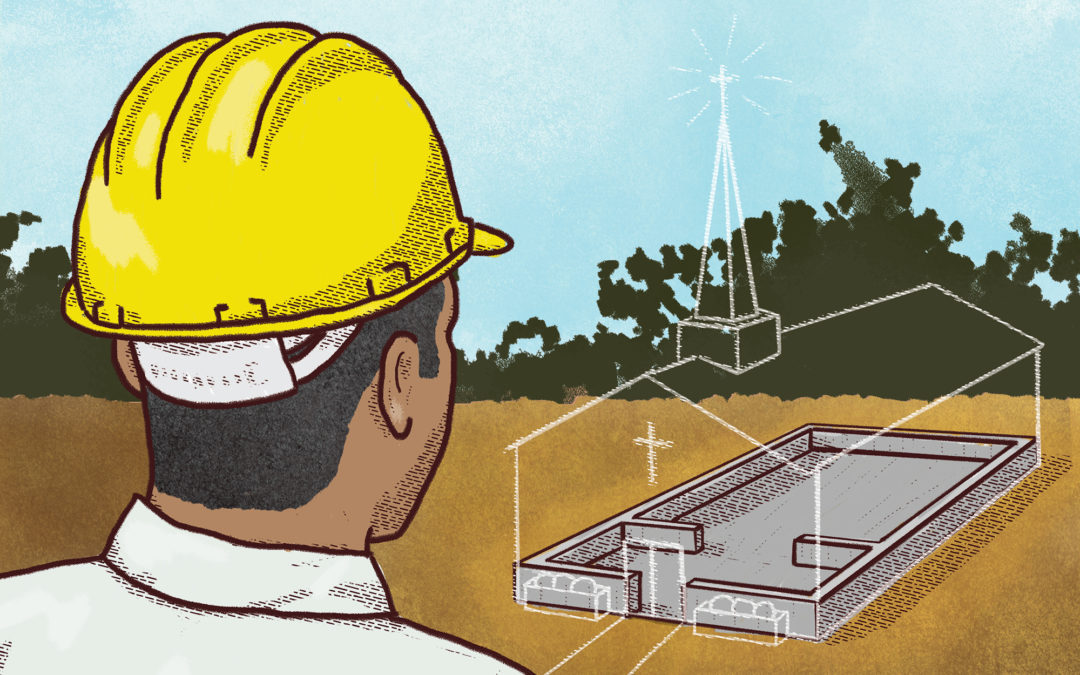Is a loan the right option for your church? Six things to consider before you borrow.
In my nearly 40 years of lending experience in both the secular banking industry and religious financial services, I’ve seen God lead people to do a lot of great things for His Kingdom, but I’ve also seen a lot of mistakes. When it comes to churches borrowing money, regardless of the size of the church or the loan, here are some things to keep in mind.
1. START WITH A WELL-THOUGHT-OUT PLAN.
The church needs to be in agreement on the arrangements of what to build, how to build it and how much to borrow. Many churches come to me, delighted to see growth in their congregation and say something like, “We want to take out a loan for a new educational space.” While the desire is there, a plan must exist to bring it into reality. First, determine your church’s need. Consult with an architect who will come up with a design that best meets that need. Next, determine the cost. Finally, secure sources of funding. Typically, a combination of capital fundraising and borrowing works best.
2. COUNT THE COST.
Luke 14:28-30 speaks of a man that doesn’t calculate the cost of building. He is able to lay the foundation but is not able to finish. All who observe him begin to ridicule and mock him. The same truths apply to churches building today: don’t build more than you can afford, and don’t cut corners. While it may seem like a large cost upfront, I would always recommend hiring an architect, as his or her expertise can end up saving money in the long run. At WatersEdge, we use a ratio of debt to income to determine a safe loan amount for a church. We consider a loan equal to 25 percent of annual budget receipts to be the max level of debt a church should take on.
3. FIND WAYS TO ENGINEER OUT COSTS WITHOUT CUTTING CORNERS.
If you know what you want to build but the cost is more than anticipated, there are plenty of ways to reduce expenses that won’t deteriorate your building’s design. Some examples include choosing lower-grade doors, opting for vinyl baseboards instead of wooden ones, more efficient light fixtures, stained concrete instead of tile, or a metal building without a brick facade.
4. IF TRYING TO BUILD DEBT-FREE, MAKE SURE YOU CAN RAISE FUNDS QUICKLY.
The prices of building and material costs have a tendency to rise 10-15 percent each year due to inflation. A church may start out with a $1 million project, but if they take four years to save and raise the money, it ends up being a $1.5 million project. In the long run, it may save your church money to take out a loan.
Building debt-free also has a tendency to take much longer than borrowing, which can be difficult for churches experiencing growth. One church I worked with raised money and pieced together a building over the course of 10 years as they tried to build debt-free. I will never forget what the pastor told me: “What bothers me most is that we lost three generations of youth who we weren’t able to reach because we didn’t have the space. If I had known it was going to take this long, we would’ve borrowed the money a long time ago.”
5. WHAT ABOUT REFINANCING?
A church should consider refinancing only if they can lower both their interest rate and monthly payment. Don’t assume banks are your only option for refinancing. Ministry-based lenders like WatersEdge have competitive rates and return loan interest back to ministry. Another reason to move a church’s loan from a bank to a ministry-based lender is that we understand the potential pitfalls of church finances and are better positioned to guide congregations when things get tough.
6. TAKE THE BURDEN OF DEBT SERIOUSLY.
I’ve seen debt destroy churches. The most dangerous mindset a church can have is that taking out a loan is not a big deal. The commitment doesn’t go away. Borrowing to build something new for your church can be like the excitement of buying a new car. When you drive it off the lot, you don’t care how much the payments are or how long you’ll be paying them. But five or six months down the road, the new car feel wears off and it becomes much less of a joy to make those payments.
A church must be committed to paying off a loan quickly. Most churches make it a priority to get out of debt using capital campaigns, devoting extra offerings to principal payments or special fundraising emphases. Many of our churches take out a loan with a 20-year term, but the vast majority pay it back within five to seven years. That’s good stewardship.
I thank God for the opportunity I have to serve churches in such a unique way. My prayer is that every congregation considering a loan will be united as they bring their plan before the Lord, and that the result will further His Kingdom.
Jerry Vaughan, chief lending officer, has decades of lending experience and working with churches. To speak to one of our church finance experts, contact WatersEdge at 800-949-9988 or loans@watersedge.com.




